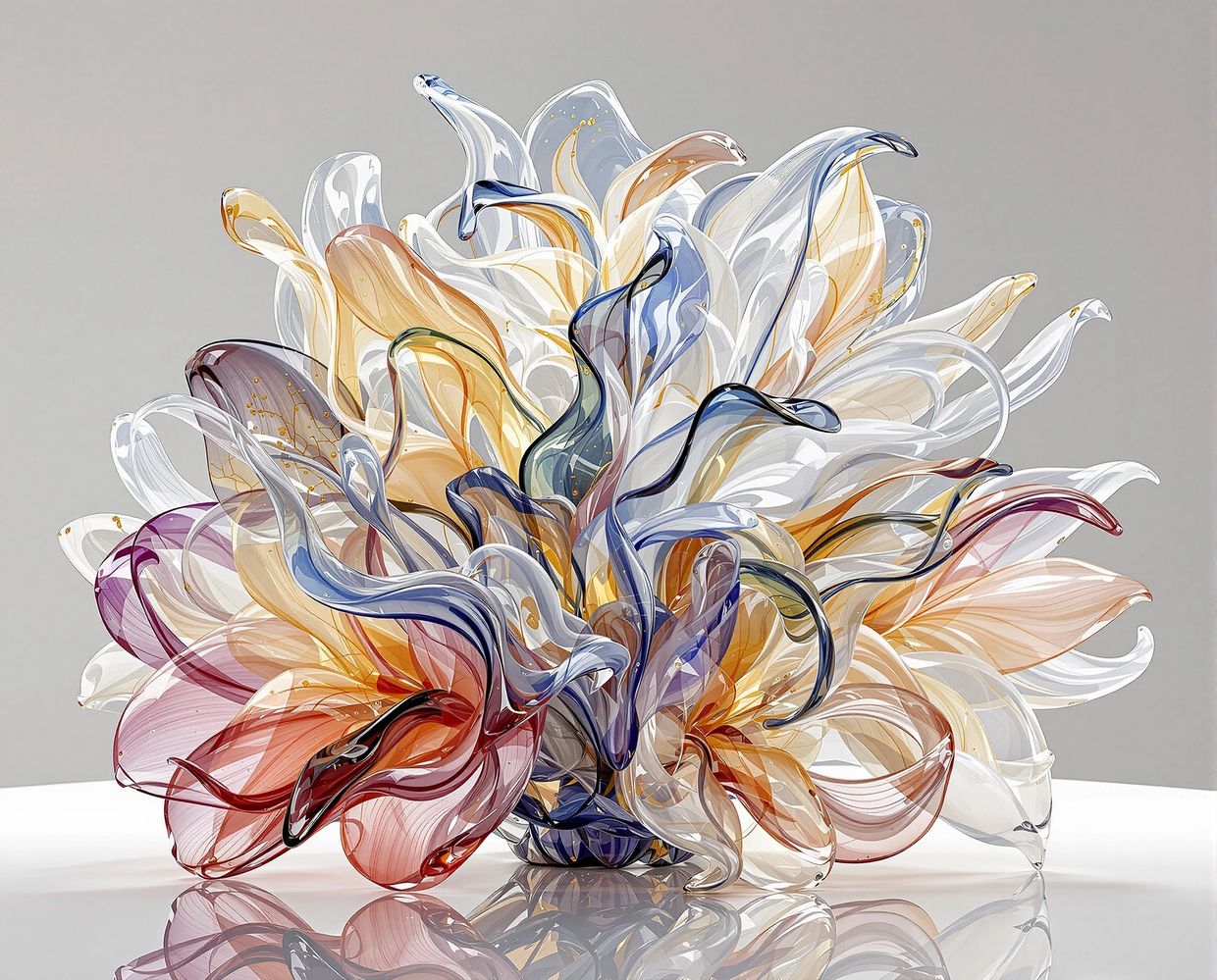Vitris: glass-like floral sculptures

Glass is a material defined by tension — between fragility and permanence, solidity and light, transparency and distortion. These works present flowers that never lived, arrangements that could never wilt — crafted entirely from glass, yet suspended between natural memory and imagined perfection. In some pieces, the glass swirls are hypnotic — more like a performance than a sculpture, as if the bouquet were captured mid-dance, frozen in centrifugal ecstasy. In others, petals appear so delicate they seem as though they might shatter at any moment. The absence of botanical realism in many cases allows the AI to lean fully into abstraction and materiality. These are not glass flowers pretending to be real. They are a fantasy of opulence made manifest in molten form.
At the heart of Vitris lies an engagement with history and technique. Some arrangements are inspired by the still lifes of 17th-century Dutch flower painting, reinterpreted through the material traditions of Murano and Lalique. From Murano, the work borrows exuberance: gold-leaf inclusions, millefiori detailing, saturated colour, and the expressive volatility of hand-blown forms. From Lalique comes restraint: satin-finished crystal, frosted translucency, and the sculptural quiet of cast glass. Together, these influences allow Vitris to move fluidly between maximalism and minimalism, between heat and silence. It is both ornamental and contemplative — echoing techniques too delicate for human hands, and forms too elaborate to exist outside the digital realm.
Created with the assistance of artificial intelligence, Vitris is less a document of craftsmanship than a study in simulation. AI cannot touch glass. It cannot feel weight, heat, or tension. But it can read and follow instructions. It can learn from language, absorb research, and generate images that behave — optically, structurally, metaphorically — like glass. The title Vitris, derived from the Latin vitrum, acknowledges this distance. It is a word about glass, not of it. These objects are not flowers, glass, or vases. They are about them. They sit at the intersection between what is known and what is created. Impossible, yet authentic. Imaginary, yet believable.
“We do not see things as they are, we see them as we are.“ — Anaïs Nin
Copyright © David Name 2025.
All rights reserved.